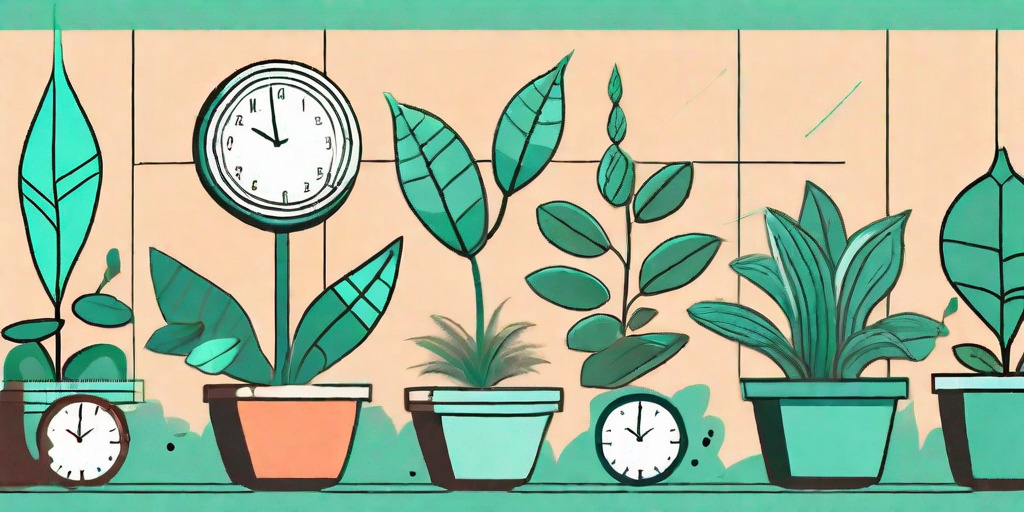
In the world of gardening, timing is not just a good idea, it's the law. And just like a good punchline, the timing of when you transplant your plants can make the difference between a flourishing garden and a botanical disaster. So, buckle up, green thumbs, as we delve into the nitty-gritty of plant transplantation.
Understanding the Importance of Timing
Why is timing so crucial, you ask? Well, imagine being abruptly woken up from a deep sleep and forced to run a marathon. You'd probably keel over before the first mile marker. Plants, like us, need time to prepare for big changes. Transplanting them at the wrong time can cause shock, stunting growth, or worse, plant demise. And nobody wants to be a plant murderer, right?
Transplanting at the right time allows plants to establish themselves in their new environment before they have to deal with stressful conditions like extreme heat, cold, or drought. It's like giving them a pep talk and a hearty breakfast before sending them off to face the world.
Decoding the Best Time to Transplant
Now that we've established the importance of timing, let's get down to brass tacks. When is the best time to transplant, you ask? Well, it's not as simple as circling a date on your calendar. It depends on a variety of factors, including the type of plant, the local climate, and the phase of the moon (just kidding about the moon part).
However, a general rule of thumb (or should we say, green thumb) is to transplant during the plant's dormant period, usually in early spring or fall. This gives them a chance to settle in before they start their growth spurt in the growing season.
Spring Transplantation
Spring is a time of rebirth and growth, making it an ideal time to transplant many types of plants. The soil is warming up, the days are getting longer, and plants are raring to grow. It's like the plant equivalent of spring break.
However, be sure to wait until after the last frost, as a sudden cold snap can damage newly transplanted plants. It's also a good idea to transplant early in the morning or late in the evening to avoid the heat of the day.
Fall Transplantation
Fall, on the other hand, is like the retirement of the plant world. The growing season is over, and plants are preparing to hunker down for the winter. Transplanting during this time allows them to establish their roots in their new location before they go dormant for the winter.
Again, timing is key. Transplant too early, and the heat of summer may stress the plants. Transplant too late, and the plants may not have enough time to establish before the first frost.
How to Transplant Your Plants
Now that we've covered the when, let's talk about the how. Transplanting may seem daunting, but with a little preparation and care, you can move your plants with minimal stress.
First, water your plants thoroughly a day or two before you plan to transplant. This will make it easier to remove them from the ground and reduce transplant shock. Then, dig a hole in the new location that is twice as wide and the same depth as the root ball of the plant.
Next, carefully remove the plant from its current location, trying to keep as much of the root ball intact as possible. Place the plant in the new hole, making sure the top of the root ball is level with the ground. Fill in the hole with soil, firm it gently around the base of the plant, and water thoroughly.
FAQs
Can I transplant in the summer?
While it's not ideal, sometimes you have no choice but to transplant in the summer. If you must, try to do it early in the morning or late in the evening when temperatures are cooler. Also, be sure to water thoroughly before and after to reduce transplant shock.
What if I transplant at the wrong time?
If you transplant at the wrong time, your plants may experience shock, which can stunt their growth or even kill them. However, with proper care and attention, you can help them recover.
How long does it take for a plant to recover from transplant shock?
Recovery time can vary depending on the plant and the severity of the shock. Some plants may bounce back in a few weeks, while others may take several months. The key is to provide consistent care and patience.
In Conclusion
Transplanting plants is not just a matter of digging a hole and plopping in a plant. It requires careful timing and technique to ensure your plants thrive in their new home. But with a little knowledge and a lot of love, you can help your plants make a smooth transition.
So, the next time you're planning to transplant, remember: timing is everything. Your plants will thank you for it. And who knows, they might even reward you with a bumper crop or a spectacular display of flowers. Now wouldn't that be a blooming good result?















